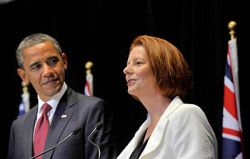Fourthly, Pakistan’s belief in offensive aggressive strategies and its deep rooted belief that by going on the offensive, smaller size forces in history have won wars against bigger enemies. All the four wars which Pakistan has fought with India (in 1947–48, 1965, 1971 and 1999), have been initiated by Pakistan. The war in 1971 was caused by Pakistan’s internal instability. But the actual war was initiated by Pakistan with a pre-emptive air strike against Indian Air Force bases on 3rd December. In addition it adopted the offensive route for its covert war through terrorism in Jammu and Kashmir since 1988 (besides that in Punjab in 1983–93). Pakistan has relied heavily on the strategy of offensive action and thus the acquisitions of high technology weapons are sought to support this strategy.
Modernisation of the PAF
During the early decades, Pakistan acquired arms mainly from the USA (for high-technology systems) and China (for low cost but efficient systems) and a small proportion contributed by France. In fact, the massive US arms aid to Pakistan in the late 1950s provided it with both the incentive to initiate the 1965 war as well as demonstrated the philosophy of high technology weapons providing a competitive advantage against India.
Pakistan entered into the Southeast Asia Treaty Organisation (SEATO) in 1955 and the Baghdad Pact, renamed the Central Treaty Organisation (CENTO), after Iraq left the pact in 1956. This resulted in a robust inflow of military and economic aid for Pakistan. Being a member of these two security alliances provided Pakistan a stronger claim on US resources and, as Dennis Kux rightly states, the US also benefited with the regular interaction between the Pakistani civilian and military officials and their counterparts from the other member countries. In this process the US acquired a larger stake in its Pakistan relationship.
By the year 1957, Pakistan was receiving a massive amount of sophisticated military equipment, training and economic aid. The inflow from Washington included sophisticated Patton main battle tanks, modern artillery, howitzers, F‑86 jet fighter squadrons, F‑104 Starfighter supersonic interceptors, air-to-air missiles, submarines (the first submarine to be introduced into the Indian Ocean by a developing country, as indeed was the F‑104 supersonic interceptor) and state-of-the-art radar, communications and transportation equipment. Further, qualitative boost came from the military training by the US military teams and also in the US military schools for the Pakistani army.
Affiliation with China
Zulfiquar Ali Bhutto’s diplomatic policy brought Pakistan closer to Beijing and Pakistan entered into several economic and military cooperation agreements with China. After the 1965 Indo-Pak war, Pakistan received interest free economic aid and also a significant amount of free weapons from China. Pakistan, in fact became the only non-communist third world country to receive generous assistance from China. The Chinese F‑6 entered the PAF inventory in 1966 followed by other systems. Chinese military assistance came in not only in the form of arms but also development of the indigenous facilities for defence production in Pakistan. The F‑6 Rebuild Factory (F‑6RF) at Kamra was set up with Chinese assistance.
The United States arms embargo followed by the 1965 Indo-Pakistan war led to withdrawal of US military assistance and also the suspension of US equipment to Pakistan. Pakistan was compelled to look into alternate options and thus it turned to China, North Korea, Germany, Italy and France for military aid. In the late 1960s, Pakistan received Mig-19 Fighters from China, apart from the substantive infantry equipment. France supplied a few Mirage aircraft and even Soviet Union provided Pakistan Mi‑8 helicopters.
In the 1970s, although US equipment was not available for Pakistan, modernisation of the PAF was kept up with the help of Chinese equipment on one side and the French equipment on the other. China supplied 115 F‑6 Fighters between 1971 and 1981. France supplied 72 Mirages between 1971–83. Some air defence equipment like F‑104A Fighters and Helicopters were bought from Jordan and UK. Indigenous defence production was focused to progress towards self-reliance and more importantly to revitalise the PAF in the 1970s. Rebuilding factories for Mirages and F‑6 planes and the production facility for MIF-17 trainers was set up.
The arms pipeline
The Soviet invasion of Afghanistan in December 1979 led to the American review of their South Asian policy and consequently Pakistan entered into a new engagement with the US. Pakistan was declared a “frontline State” and in return received massive military aid. General Zia-ul Haq managed to negotiate an elaborate military and security-related aid package of US$ 3.2 billion. The US military aerospace power PAK HEADWAY An ISO 9001:2008 Certified Magazine assistance programme included the sale of 40 F‑16 Falcon multi-role combat aircraft, one of the most advanced military aircraft in the world at that time. Pakistan also received attack helicopters and second-hand destroyers.
The second US package worth US$ 4.02 billon commenced in 1987 but was suspended due to the US arms embargo in 1990 due to Pakistan crossing the “red line” to acquire nuclear weapons capability. Chinese weapons, being cheaper, continued to hold a significant share in the Pakistani inventory. Although arms from China were technologically not as superior as from the West, however they were capable systems, were affordable and provided quantity to boost Pakistan’s military powers. In fact, by the early 1980s, China had provided Pakistan with roughly about 65 per cent of its aircraft.

 von
von 
